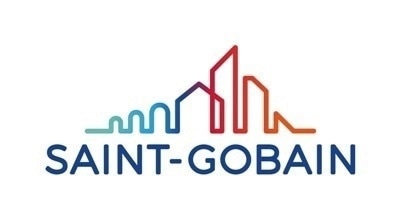The world’s enthusiasm for energy is steadily increasing. Reliable energy is essentially the backbone of everything in the modern world, from industry and mobility to communication. These are a few key areas of an almost inexhaustible list of fields and applications that depend on energy. Energy also plays a key role in our daily lives.
With fossil energy resources becoming increasingly limited and their negative impact on the environment, finding innovative ways to generate, store, and use energy is becoming even more important.
In this article, we will explore how tapes can help ease the challenges faced by the energy supply. Tapes are useful throughout various areas, such as renewable energy production, transformation and storage, or mobility and savings opportunities in buildings.

Image Credit: Saint-Gobain Tape Solutions
Increasing Efficiency in Renewable Energy Production with Tapes
In continued global attempts to reduce greenhouse gas emissions, energy production from renewable sources, such as the sun, wind, and water, is rising. Increasing access to renewable energy creation units is one way to address this issue. Another is to improve the efficiency of existing and new installations.
Tapes are finding application in emerging renewable energy markets to modernize composite molding processes in wind blade production. They make them more efficient while protecting tools and equipment and creating enhanced surface structures. They are also used in constructing the world’s biggest wind turbines, which sit in higher air layers for improved output.
Adhesive tapes are also used in solar power applications, as they meet the bonding needs of this technology. Tapes can endure stresses from outdoor exposure and protect sensitive components.
They can be practical during production and assembly processes while combining unique functional performance attributes in a single product. Special foam and tape technologies offer unparalleled sealing and watertight properties for a number of wind, solar, and hydro-energy production applications.
Transform Energy
Most of the energy generated is not directly consumed where it has been produced. It needs to be transported, which means it needs to be transformed. Tapes significantly facilitate enhanced performance, less maintenance, and prolonged lifetime through sufficient protection and isolation under harsh environmental conditions in transformers, motors, and generators.
With the increased need for “greener” transformers, developers are inspired by solutions such as those based on more sustainable resins, which allow them to design special tapes that satisfy the exceptional chemical resistance and compatibility qualities required for a modernized power supply.
Tapes Help Solve the Grid-Level Energy Storage Problem
Solar and wind both act as “intermittent” electricity sources. Their energy output changes in line with the weather. In addition to negotiating energy transportation and transformation, power is required when wind or sun is absent.
This can mean a short energy supply at certain times or even lead to overabundance. This is where energy storage comes into play, commonly known as the “grid-level energy storage problem”.
Several forms of energy storage are available that store energy at one time so it can be released at another. These include pumped hydroelectricity, hydrogen, compressed air, heat, and lifted weight storage (LWS) in gravity batteries, etc.
Battery Energy Storage Solutions (BESS), predominantly based on lithium-ion technologies such as those used in electric vehicles (EV), compression pads, thermal interface materials, and thermal runaway protection materials, can boost battery performance. Furthermore, these solutions can extend battery lifetimes, maximize charging cycle numbers, and improve protection through groundbreaking thermal properties.
Tapes to Power-up, Protect and Fast-Charge Electric Vehicles
Tapes can be considered reliable components in renewable energy production, transformation, and storage. They improve protection, safety, and performance in BESS. The main motivator for developing BESS materials has been the advancements in EVs' battery technology.
In lithium-ion batteries, state-of-the-art compression pads between the cells combine defined pressure on cells throughout charging and discharging cycles with thermal and electrical isolation for improved performance and extended lifetime.
Thermal Interface Materials (TIM) help guide heat away from the main battery components, which, in turn, regulates battery temperatures. Thermal Runaway Protection (TRP) materials produce a thermal barrier to significantly reduce the risk of fire propagation, improving safety in an exothermic event.
These materials and technologies allow EVs to travel further, yet one of the major challenges is the time needed to recharge. Fast—or ultra-fast charging are the most coveted words, and special tapes offer exceptional electric isolation. They can be used to seal charging stations against environmental influences and reduce charging times while optimizing safety and protection at the same time.
Save Energy in Buildings with Tapes
New and more efficient energy supply and mobility technologies are central to the energy industry, but the most significant impact can be achieved with energy savings. With a contribution of around 40% of total global greenhouse gas emissions, the building and construction industry is a “heavyweight” in the truest sense of the word.
However, greenhouse emissions can be significantly reduced by renovating and refurbishing existing buildings, constructing more energy-efficient buildings, and ushering in new technologies like lightweight construction. Moreover, tapes can be key components in each of these applications.
Tapes can help boost energy efficiency by creating airtight and watertight building envelopes. Moreover, they can enhance indoor living comfort. Advanced foam materials incorporate sealing, dampening, and fire protection in a single product, which also helps maximize acoustical comfort.
Significant potential lies in lightweight and prefab construction, where foams and tapes are used across various sealing and bonding applications.
As things continue to evolve, small components like foams and tapes empower engineers worldwide to design and innovate new methods for powering the future.

This information has been sourced, reviewed and adapted from materials provided by Saint-Gobain Tape Solutions.
For more information on this source, please visit Saint-Gobain Tape Solutions.